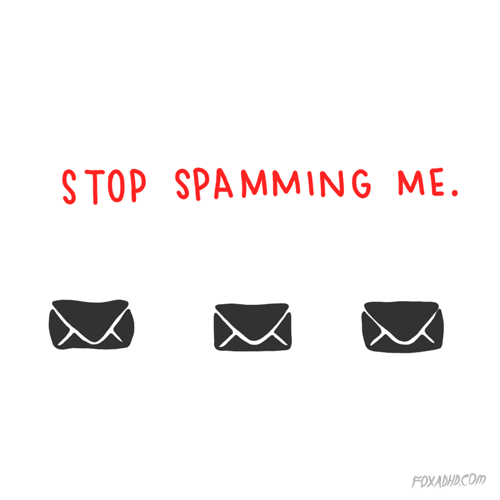
How to Get Amazon Customer Reviews/Feedback? – The Definitive Guide
Be it in the real world or online, selling a product is never an easy undertaking, especially if you are just starting out. For one, nobody knows who you are, or that you even exist. And secondly, being new means consumers will have a hard time trusting you or the quality of your product.
In the Amazon ecosystem, building a reputable seller name is key to get people to buy your products. An account with favorable reviews tied to it shows buyers that a seller is trustworthy and that his/her products are indeed what he/she promised. The more favorable reviews/feedback a seller get, the better the chances of getting more sales.
And this is why it is very important for any new Amazon seller to get his/her first few buyers to give him/her a review/feedback. But being new, the question is, how?
Well don’t worry as this article will cover all the aspects of getting buyers to give you a product review/feedback. But before we get to that part, let me first take a few detours and talk about things related to it.
Why you ask? We’ll it’s basically the fact that I just don’t want you to know the “how” part, but also the “why”.
And let’s start with;
Difference Between An Amazon Product Review And Seller Feedback
Some of you might brush the difference off as mere technicalities and nit-picking, and I can’t blame them. Because like them, I too didn’t see the importance of targeting one from the other when I was starting out on Amazon. But later on, it dawned on me that the two have completely different effects on my efforts to sell products on the platform.
Seller Feedback
This relates to how customers see you as a merchant on Amazon. In short, a reflection of the user’s experience in dealing with you.
With 5 stars as the highest, seller feedback shows others how accurately your products are presented, how it is shipped and the seller’s after sales service.
So basically, if you want to market your business as a reputable “brand” on Amazon, this is what you should concentrate on.
Product Reviews
Product review on the other is what the name suggests; a reflection on the products that you are selling on the platform.
It answers an important question for other Amazon users, and that is “if your product is actually what you say it is”. If you sell wallets and described one as “genuine”, the authenticity of your claim will be verified through product reviews of those that bought it.
It also serves as an important algorithm factor for Amazon when showing search results to its users. Products with positive product reviews are given priority over those that don’t, especially for newly added products.
How To Get Your Customers To Give You A Feedback/Review
In the old days, what we did as to place a request on the description of each of our items. Looking back at it now though, it wasn’t really professional and even looked needy. But it did work before, and even till now, I see some old sellers still using that method.
But just as phones nowadays are marketed as “smart” phones rather than mere mobile phones, then so must your Amazon marketing/branding campaign be. Smart and able to adapt to a new generation of online consumers.
And this is where automated email messaging systems comes into play. But more on that later, let me just explain to you how I do my feedback/review farming these days.
Effective Email Marketing On Amazon

When you see the word email marketing the first word that comes to mind for most, if not all is, spam. And yeah, I totally agree as most campaigns do fall under the category.
But then again, if you use email marketing correctly and leverage it as a sort of private messaging system between you and your customer, you suddenly gain an indispensable marketing/branding tool for your Amazon business.
How To Make The Most Out Of Your Email Campaign
First thing you should remember is not to be pushy, needy, or outright annoying. When sending your customers an email, don’t talk about business, but rather ask them if they are satisfied with their purchase. In short, let them talk.
What most Amazon sellers do is to use emails as a way to send catalogs and “what-have-yous”, to their client list. Now if you were a client that bought a product from, let’s say, Business X, how would you feel if you got an email from them that is trying to shove more products down your throat? You would feel used and irritated yeah?
If you want to do effective email marketing, you need to be subtle.
- Ask customers about their reaction towards the product
- Ask customers what issues they encountered when they purchased the product
- Ask customers what they think is needed to improve your entire system
Basically, get them to tell you what they want. Because at the end of the day, it’s what they want that can get you a sale and not what you think is right.
As for sending out emails;
You Need To Have An Efficient Email Marketing Campaign

There is a difference between having an email campaign and having one that is efficient. So don’t get this one mixed up.
An effective email marketing campaign needs to have;
- Consistency
- A well laid out plan
- An objective
The way I do mine is to send an email everytime someone buys from my Amazon store. This is the first of three emails I send for every sale I get.
The reason for sending one right after a purchase is to instantly try and develop a sort of after sales support for the user. This may not be important for some, but the reality is, making your customer feel that there is someone they can talk to makes a whole world of difference in terms of branding.
The content of the first email is usually a typical “Hi and hello” message. And it is my way of reaching out to the buyer. The idea is to humanize the connection between seller and buyer.
Building and fostering a relationship with all your customers will pay off greatly in the future.
The second email I send is a fine balance between “reaching out and marketing”. Sending it a few days after the customer got his/her purchase, it asks the customer about his/her reaction towards the product. Is he/she happy with it? Did it arrive on time? Etc etc.
If you noticed, I am again asking for the customer’s opinion. Doing so makes them feel comfortable and in control, which also makes them a bit vulnerable. (shhhhhhh =) )
And this is the email where I slip in my request for either a review or a feedback.
My response rate for this style is roughly around 75%. And for me, It doesn’t really matter if each review/feedback is positive or not, as there are ways to handle negative reviews/feedback. But that I will save for another article.
Lastly, the last email you need to send is a week or two after the point of sale. Again, this email should have the same feel as the first two, but this time, you can add in whatever marketing campaign you want. Just remember though to keep the tone very casual, as if you’re talking to a friend.
This is also my last chance to get a review/feedback from this customer for his/her purchase, so I again reiterate that request. This email usually shoots up my review/feedback response to 80 or 85 percent, depending on the season. Hey, 85% is good enough yeah?
So again, when it comes to email marketing always remember; never be greedy, turn customers into “friends” and be casual.
So let’s say you followed all things I mentioned and is not getting a lot of traffic and sales on Amazon. How long do you think you can keep sending those emails before you get burnt out?
My suggestion is;
Go Get Yourself An Email Sequencer Program
An email sequencer is a program that automatically sends email to any contact list of your choice, or when a campaign response (that you created) is triggered. And the one I use is SellerLift.
The beauty of using SellerLift for your Amazon store is that you completely automate the entire process I mentioned above.
All you have to do is;
- Create your email content
- Connect your email sequencer to your Amazon account
- Tweak what email is to be sent first and when
Of course you still have the choice to send an email to your customers manually, but what I like the most about SellerLift is that it allowed me to have more time to concentrate on other important things to make my Amazon store grow.
Have you ever tried sending 10 emails from your phone while talking to a supplier for your Amazon product in the middle of nowhere? If yes, then you would know how happy I am to not worry about that scenario anymore, aside from acting completely unprofessional in front of my supplier.
SellerLift is not a magic pill. You still need to have dedication and do everything to make your customers happy for your Amazon store to grow. But if you are after something to make things more efficient and easier for you, then SellerLift is an indispensable tool.
That’s it. I hope that my personal experience, and processes, as veteran Amazon seller has helped you in some ways.
If you found this article to be somewhat helpful, please do me a favor and share it with others. We were all newbies to this at some point of our lives, and I hope that you share my resolve in helping those newer Amazon sellers in achieving a level of success on the platform.
Till the next article, have an awesome day!
Johann is a Psychology major turned online writer and branding/marketing consultant since 2008. He now happily calls SellerLift home, and is the person behind their blog content.
In his spare time, and to remind himself that there is more to life than his computer monitor, he throws himself down steep country roads on his longboard, takes black and white photos, and produces lounge music for an independent music label.
